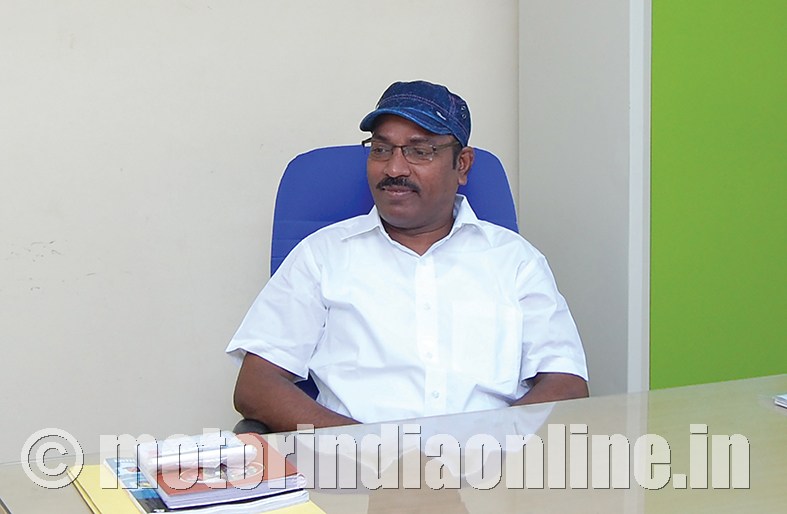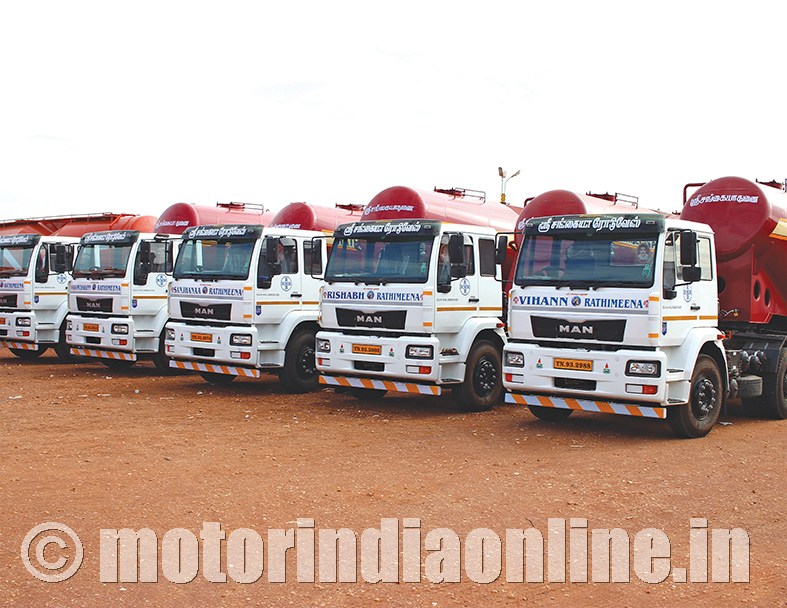“In today’s world the “Efficiency” of a Motor Vehicle is the most important parameter that is being addressed to by all the OEMs. With the cost of fuel, manpower, finance cost, etc., soaring up, it has become a tough environment for the transporters to demand high margins. We Shree Jayadurgaa Industries, Namakkal, decided to take on the second meaning of efficiency in the CV industry and work on the more efficient designs for a commercial vehicle body building which would enable a transporter to carry more in the same vehicle. We are one of the leading fabricators of various types of Rigid body Bulkers, Bulker tanker semi-trailers. We feel proud in developing light weight cement bulkers for the first time when other bulkers were built with conventional way of fabrication almost with mild steel sheets and standard structural steel sections,” tells Mr. T. Panneerselvam, Managing Director, Shree Jayadurgaa Industries, Namkkal, Tamil Nadu. He explains the semi-trailer light-weighting exercise undertaken.

Excerpts:
Light-weighting of Cement Bulker Semi Trailers
Jayadurgaa Bulkers are built with special steels with low alloy higher yield strength. The difference between Jayadurgaa Bulkers and other bulkers is the tare weight. The main difference between the mild steel and higher strength steel is the yield strength.
For the construction of cement bulkers we use various grades and thickness plate for the tank portion where critical stresses are high due to static and dynamic load condition of the bulker. Likewise, for the structural portion the suitable grade is selected as the compressive load is more than the tensile load in the tank portion and hence suitable thickness and grade which is apt for this application is chosen which also helped us on the cost economics. With our presence in the market for the last 4 years and with the various technical studies and experiments, we have understood that a typical commercial vehicle body being built in India can easily be made 20% to 30% lighter using these grades of high yield strength steel.
In order to help our customers with newer designs, concepts and technical supports, we have done a forward integration in our system by starting a “Design Centre” vertical in our company. Over here, we use latest CAD software and convert existing 2D drawings of the body into 3D models thro’ which we develop the product with high strength steel.
Initially, we successfully launched two nos. Cement Bulkers in April 2013. Performance and results were amazing as per the statement of the customer and we received a feedback from the customer that the Diesel consumption has reduced considerably and also the tyre mileage has improved compared to their other vehicles thus resulting in lower maintenance costs. On studying the entire process of the development of Light weight bulkers built with high strength Steel sheets, we took this opportunity to launch the lightest semi-trailer type cement bulker in the Indian roads.
Weight Reduction Achieved – 1250 Kg
In the current scenario, where fuel prices are rising everyday, economic consumption of the diesel is definitely a national saving as well as it leads to lower transportation costs. On the other hand the benefit in the tyre mileage due to reduction of weight about 1250 kg in the tare weight of the bulker is economically advantageous to the transporters. The pay back for the extra price on the high strength steel – Light weight bulkers is worked out and found to be recovered within just 8 to 10 months.
The cement bulker is in articulated semi trailers category which is to be in accordance with AIS-113. When analyzing the construction of the cement bulker which is a welded assembly structure, it has two major portions fitted with standard Suspension Axle assembly with Tyres manufactured by popular OEM brands.
- A) Tank portion with pneumatic pipe line, B) Chassis & Structural portion
More than half of the weight is bulker shared by the first two portions said above and the weight of the steel welded structure can be reduced and the weight reduction could be achieved by proper design optimization procedures. It can be achieved by both trimming off the unnecessary steel portions which give unnecessary weight in the structure than required for normal running of vehicle without compromising the performance of the same during its service and also by replacing the existing steel like A36 grade of low carbon or IS 2062 grade which has low yield strength.
For a standard 36 CuM cement bulker trailer, the weight with conventional fabrication practice is 8300 kg constructed with 4 mm thick shell plate, 5 mm thick dished and 6 mm thick subframe, etc. After re-engineering of the design it has been achieved with tare weight of 7050 kg with total saving of 1250 kg which gives considerable savings in diesel mileage, tyre mileage with higher payloads.
The structural portion which withstands the weight of cylindrical / conical tank is the integral part of the whole welded assembly. Subframes are reinforced with stiffeners at the interval of adequate spacing on which the compressive forces act, exerted by the self weight of the tank and weight of the material inside the tank.
Instead of selecting the conventional low carbon mild steel with an yield strength of 240 N/Sq.mm, low alloy high strength structural steel of yield more than 355 N/Sq.mm or even more than that is a good choice technically within the cost and economical constraints.
Light-weighting procedure of Cement Bulker Semi Trailers
In a nutshell, the important points of light weighting of cement bulker, various types of semi trailers and various types of haulage truck trailers are:
- Replace standard steel sections of more section weights with bent, formed sections made of available low carbon steel sheets or higher strength steel.
- Always open up eyes and look forward for the availability of HSLA / higher strength steel wherever applicable in the cement bulker /trailer within the design limits at affordable costs.
- Re-engineering of the components of the cement bulkers/ trailer still in the well of conventional overdesign with more weight than required.
- Try to use latest software based on applicable code of design or use rule of thumb in deciding the thickness with respect to loads acting on the part.
- Practice standard welding procedure for joining the higher strength steel as per the recommendations given by the steel manufacturer with suitable welding electrode.
- Think twice while finalizing the thickness, size and weight of the component even if it is a bolt or small fitting according to the grade and strength of the material.
- Training of workmen especially welders who are still in conventional mindset of working in comfort zones with some decades of experience to practice with high strength steels which are light weight and minimal thickness.
- Appreciate the team for good job done at any stages of production like fabrication, welding grinding, painting and final inspection.
- Continuous search of knowledge and understanding of newer design concepts and procurement of high strength low alloy steel (HSLA) or any other high strength steel which has the properties like stiffness, toughness, formability, weldability, dent resistance and fatigue, etc.
- Explain and satisfy the customer to understand new concept of light weighting of the bulker made of modern materials with added benefits on saving of fuel consumption, more tyre life and extra payload.
